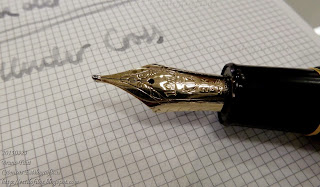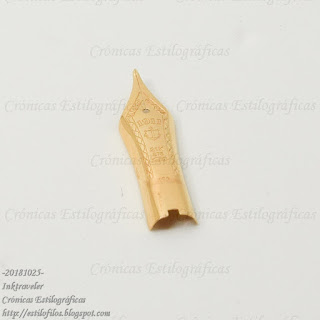In 2022, Lamy has released the Lamy Kanji in East Asia. But this edition, developed by Lamy Hong Kong, is more more than just a variation of colors, as is the case of those special editions above mentioned. On this occasion, Lamy came with an original nib—the Kanji nib.
 Interestingly enough, the explanations on the specifics of the nib come in Chinese, English and Thai.
Interestingly enough, the explanations on the specifics of the nib come in Chinese, English and Thai.
The variations with respect to the regular Safari nib –the Z50 nib- are easy to spot: longer and narrower tines, and a specific nib point akin to a fine architect.
The selling argument is that this nib is more suitable for writing Chinese ideograms... Well, just like Sailor claimed re the Nagahara's Naginata.
 The Kanji nib offers some line variation on the angle between pen and paper. Not extreme, but noticeable.
The Kanji nib offers some line variation on the angle between pen and paper. Not extreme, but noticeable.
So, is this the Lamy version of the Sailor Naginata Togi nib?
The price of the Safari Kanji is JPY 6000, plus taxes, which is 50% more expensive than a regular, non-Kanji, Safari.
Lamy Safari Kanji – Franklin Christoph Urushi Red.
Bruno Taut
November 3rd, 2022
etiquetas: Lamy, plumín, mercado
Bruno Taut
November 3rd, 2022
etiquetas: Lamy, plumín, mercado





































